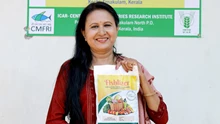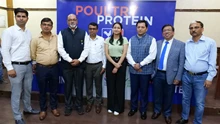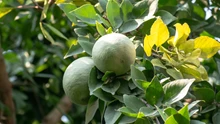
For most of the population in Asia, rice is the most important cereal crop. Rice used to be a luxury item in households, but it is now a staple food for more than 70% of the population. Dormancy is the temporary halting of seed growth prior to the completion of the maturation process. Seed dormancy is sometimes defined as the inability of a fully developed and viable seed to germinate to a significant degree in favourable environmental conditions.
While dormancy is a concern in agriculture because it hinders plant establishment. It is the ability of seeds to postpone germination until the optimum time and place for seed germination, which is an important survival mechanism in plants. Pre-harvest sprouting (PHS) or viviparous germination, is a common problem in tropical cultivars grown during the monsoon season, which can be prevented by inducing seed dormancy in particular varieties (Sanghamitra et al., 2018).
Dormancy in rice is a temporary halt in the growth and development of rice seeds that happens during the seed development stage and lasts for a fixed period of time. Rice seed dormancy is enforced by a combination of hull and embryo components. Rice seed dormancy is a common issue for farmers since it inhibits seed germination and vigour throughout the early phases of crop development, resulting in lower yield. Farmers misinterpret this dormancy as non-viability of seed. Thus, before sowing, the occurrence of dormancy in paddy cultivars must be investigated, and breaking of seed dormancy can be done by nitric acid chemical with concentration of 0.1 N followed by 24 hrs soaking (Waheed et al., 2012).
In coastal regions, prolonged hours of rainy weather during harvest time, causes heavy pre-harvest sprouting (PHS) in the rice field. A common phenomenon in our country affecting seed yield and its quality by untimely rains and floods in the coastal regions. Due to the changing environment in the recent past, this is more pronounced and as a result, the standing matured crop gets damaged in these untimely rains and caught in floods/submergence in many instances. The non-dormant varieties are the worst affected due to vivipary, as well as physical and physiological deterioration.
Sometimes, due to the lack of concrete threshing floors and driers, most of the farmers are bound to delay harvesting, threshing and drying of seeds until weather becomes clear and sunny. Under such circumstances, pre- and post-harvest sprouting (PHS) of seeds will result in low returns for farmers. Therefore, development of such varieties possessing dormancy to meet the demands of the coastal belts and cyclone affected regions particularly during seed harvesting in rainy season, is an important research approach for which it is essential to understand the importance of seed dormancy of rice varieties (Sooganna et al., 2012).
Fortunately, there is a potential remedy to this problem by inducing seed dormancy in some varieties. Chemicals have received a lot of interest in recent years because naturally occurring growth inhibitors are thought to play a big role in dormancy induction and termination. Some chemicals have been identified to be capable of manipulating crop seed dormancy. Maleic hydrazide (MH), NaCl, Coumarin, Abscisic acid, etc can be used for inducing seed dormancy during flowering stage as foliar spray.
Dormancy is one of the mechanisms through which seeds remain viable in adverse conditions. Pre-harvest sprouting in non-dormant varieties occurs regularly in India due to unseasonal rain in the months of November-December for the kharif crop and April-May for the summer crop, resulting in significant yield loss and poor seed quality. As a result, seed dormancy in rice crop can be induced by the use of specific chemicals or plant breeding techniques. A generic model for seed dormancy is based on the idea that the balance of growth inhibitors and promoters determines the state of dormancy. Maleic hydrazide (Diethanolamine salt of 1,2-dihydroxy-3,6 pyridazine-dione), a growth inhibitor, has been used to induce dormancy in rice and reduce pre- and post- harvest sprouting losses.
References
Waheed AH, Ahmad H and Abbasi FM. 2012. Different treatment of rice seed dormancy breaking, germination of both wild species and cultivated varieties (Oryza sativa L.), Journal of Materials and Environmental Science, 3 (3): 551-560.
Sanghamitra P, Sahu RK, Singh LK, Moharana D, Bagchi TB, Munda S, Sarkar S, Basak N, Kumar G, Yadav MG, Bose LK, Marandi BC, Meher J and Subuddhi HN. 2018. Does ecology has an impact on seed dormancy???, Oryza, 55 (3): 445-451.
Sooganna LV, Subbarao P, Kiran Babu P, Chaitanya U and Keshavulu K. 2012. Effect of maleic hydrazide on induction of seed dormancy and seed quality parameters in rice, Seed Research, 40 (2): 124-133.
Authors
C. Kulkarni1 and S. Tripathy2
Department of Seed Science and Technology, Odisha University of Agriculture and Technology, Bhubaneswar, 751003, Odisha1
Department of Entomology, Faculty of Agriculture, Sri Sri University, Cuttack, 754006, Odisha2














Share your comments